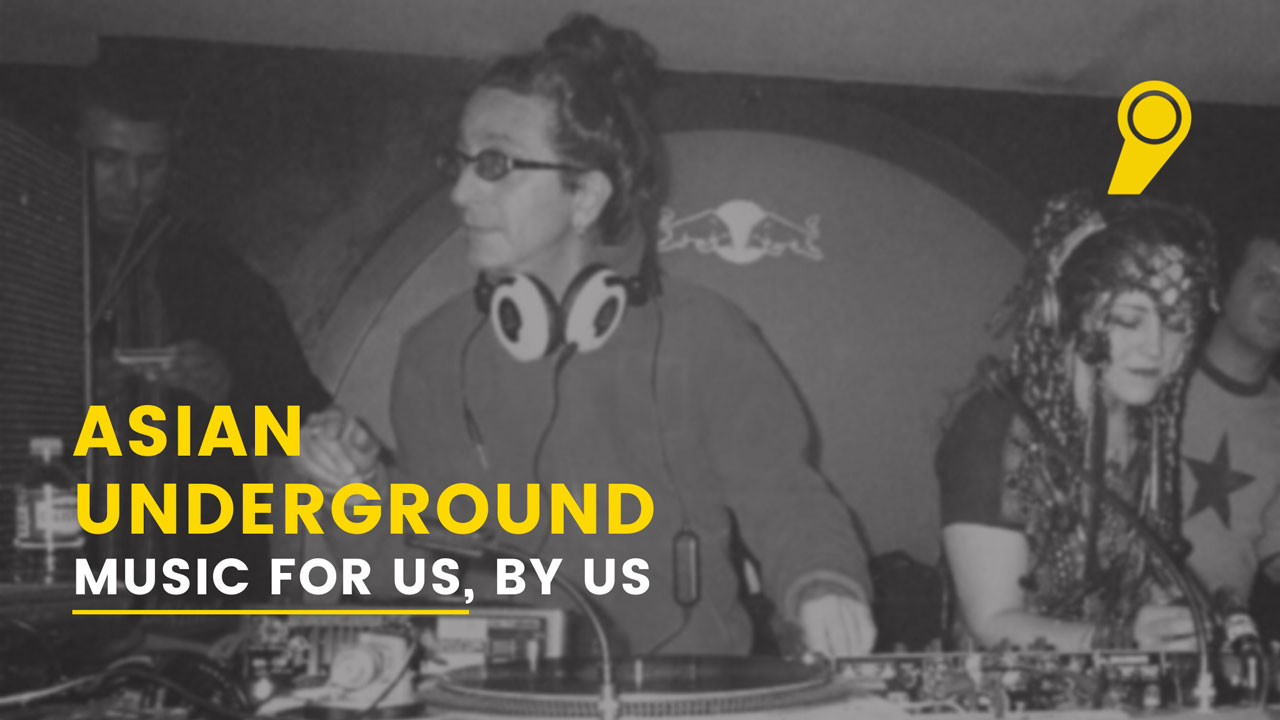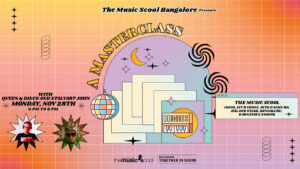
Artificial Intelligence (AI) in DJing
Transforming
Track Discovery, Mix Production, and Self-Promotion

Lazim hai hum bhi dekhenge,
Hum dekhenge
Wo din ke jiska wada hai,
jo louh-i-azl pe likha hai,
hum dekhenge.
(We shall bear witness to the promised day written into the canvas of eternity)
– FAIZ AHMED FAIZ
Music has historically been a potent tool for protesting and making political statements. Over the decades, this music served as a rallying point for British-born youngsters from India, Pakistan, Bangladesh, Sri Lanka, and elsewhere who were battling with race and identity concerns. Promoting ideas of civil rights and cooperation with other radicalised ethnic groups in Britain, and stressing a sense of pride in Muslim and Asian identity.
In the world of hybrid music genres created by diaspora communities. The British Asian genre is one of the most known, with several leading lights circularly gaining popularity in various countries. The whole idea of the movement was that cultural change could occur and that Asians would feel they have a relevance and identity within the wider culture.
Within the umbrella of British Asian music, this form of music evolved from two sub-genres BHANGRA and FOLK MUSIC, whose popularity grew exponentially from the vibrant production centres of London, Birmingham, Wolverhampton, Leicester and other towns in the Midlands; and the ‘Asian Underground’ movement in the 1990s, broadly based in clubs such as Anokha and Outcaste.
The dress, dance, beats and music associated with bhangra have evolved into one of the major cultural markers of the British Asian community. A folk genre of the people of Punjab regions across India and Pakistan, it first arrived after World War II in the 1950s and 1960s with the mass migration of workers from the subcontinent.
Driven by nostalgia for the homeland, some vinyl records were imported intermittently and enjoyed in private homes or small gatherings of friends and family, in the wider context of racism, difficult employment and housing conditions. The first bhangra musicians emerged in the 1960s, performing in weddings, community events and gurdwaras. Two pioneering bands were Anari Sangeet Party and Bhujhangy Group from Birmingham. Another major centre was Southall, where among the fast-growing south Asian population in the 1970s was young singer Channi Singh, who arrived from Malerkotla in Punjab and went on to spark a bhangra-based revival through a group called Alaap founded in 1977.
Decorated with the royal honour of OBE in 2012, Singh, who has performed in all iconic music centres in Britain and Europe, is often described as the ‘godfather of bhangra’. He says: “When we arrived here, our youngsters did not want to listen to Punjabi music. Me and other members of Alaap gave a new dimension to bhangra, adding violin and other western instruments, with new lyrics. The music soon became popular across communities, I performed at the WOMAD Festival and many other events; people began playing the music in cars. It went to other countries too; the music gained recognition. It gave a sense of identity to our youth, who had forgotten our culture. They found cultural roots and the music brought communities together across religions. Alaap and my efforts paved the way for generations of new performers.”
As the popularity of new bhangra numbers composed by new generations of performers using western instruments grew, a distinct form emerged: ‘British bhangra’, as Dudrah has conceptualised it. The genre was fused with western sounds such as dancehall, grime, UK garage, RnB, hiphop, reggae, reaching younger, newer audiences in Britain and abroad, as musicians experimented and improvised with technology. It was soon noticed by the mainstream music press as a form of south Asian youth culture. In Birmingham, the vibrant bhangra scene has been sustained by several record labels, musicians and groups such as Nachural Records, Envy Roma Music, Achanak, Anari Sangeet Party, Apna Group, Bally Jagpal, Balbir and Dalbir Khanpur, DCS, Dr Zeus, Dalvinder Singh, Jazzy B, Jassi Sidhu, Hard Kaur, Malkit Singh, Mesophuria and Nachdey Sansaar. Popular second-generation artistes such as Apache Indian (Steven Kapur) and Bally Sagoo reimagined and redefined the magic of music from the subcontinent, fusing Punjabi lyrics and beats with western instruments and genres such as UK pop, RnB, soul, reggae, grime and other world sounds.
Three individuals have been central in taking forward the initial impetus: tabla player and fusion music composer Talvin Singh, promoter Sweety Kapoor and DJ-producer Saifulla ‘Sam’ Zaman (better known by his stage name of State of Bengal). In the 1990s, the group organised Anokha Club Nights in London to support aspiring musicians at gatherings that drew thousands of Asian and other young people. They released the compilation Anokha — Sounds of the Asian Underground, which impacted genres in various nations and is a significant part of the British Asian music history.
In the late 1990s, DJs and musicians of Indian, Pakistani, and Bangladeshi heritage produced a fusion of South Asian genres with western breakbeats for the dance club scene. Its success was unprecedented: British Bhangra, a mix of Punjabi folk music and hip-hop musical components, was hugely popular among South Asian populations in the UK, but it hadn’t yet made it mainstream. The enormous interest in Asian Underground music heralded the rise of a supposedly new, tolerant, and multicultural Britain that could finally accommodate South Asians, according to many.
The whole idea of the movement was that cultural change could occur and that Asians would feel they have a relevance and identity within the wider culture. They sought for visibility in a way that had never been done before, and they got it. It also provided Asians with more possibilities in the arts, such as dance, television, theatre, literature, and mainstream radio. It’s a legacy that they’ve left behind. It evolved, as does every movement, and many more young artists and DJs who were inspired began to take a stand. This scenario was both artistic and political, and it ushered in a shift in how brown people were viewed.
With the success of Panjabi MC’s 2002 hit Mundian to Bach Ke, British Asian music spread like wildfire. Producer Bally Sagoo’s Bollywood remixes pushed things to a whole new level. Time-stretched drum’n’bass from Tabla Beat Science. Talvin Singh and Nitin Sawhney were among the most acclaimed and experimental artists.
In 1999, both Sawhney and Singh released significant albums: Beyond Skin, Sawhney’s fourth, and OK, Singh’s debut. In 1999, OK earned the Mercury Prize, and the following year, Beyond Skin was nominated.
Talvin Singh and Nitin Sawhney Both have had long careers as composers, allowing numerous collaborative groups and solo artists to hold a stance and express their culture, as well as the racial discrimination they experienced as immigrants. Nonetheless, the Asian underground movement starts to fade soon.
Sawhney explains. “What was thrilling about the movement was the possibility of cultural transformation and Asians feeling a sense of relevance and identity within the larger culture. Not that we were underground, but more that we were a part of the music.”
In the early 1990s, Shabs Jobanputra, the founder of the Outcaste record company, which released Sawhney’s Beyond Skin, was one of the few record label executives pushing this emerging scene. He started Outcaste in 1994 to see whether he could start a movement to express his culture.
Shabs Jobanputra why did that power fade ? Jobanputra believes that the novelty of the movement’s distinctiveness has worn off, and that the scene has suffered the consequences. It creatively ran out of steam,” he says. “I didn’t want to regurgitate the same ideas.” Instead, he now sees British Asian success in individual acts making music, rather than a collaborative movement , he continues “However, because the culture has progressed, it is no longer as easy to attribute Asian identity to items.” The younger generation has no inhibitions; they may be themselves without fear of being judged. We needed something to rail against in order to unite us.”
Sab taaj uchale jaenge.
Sab takht giraye jayenge.
Bas naam rahega insaniyat ka.
Hum dekhenge.

Transforming
Track Discovery, Mix Production, and Self-Promotion

Masterclass with Queen & Disco, Stalvart November 28 @ 4:00 PM – 6:00 PM Venue: Register Now

Our top 3 MIDI controller recommendations for VJs
Ready to Get Started?
Leave us your details and we’ll get in touch soon.
UPCOMING EVENTS AND SPECIAL OFFERS
GET Monthly NEWSLETTERS